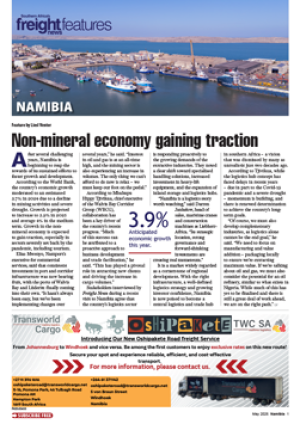QUOTAS INTRODUCED for Chinese textile
exports could benefit Thailand’s SMEs in trade
with South Africa on a macro level and swing
the Thai garment sector around, according to
the Royal Thai Embassy in South Africa.
“Thailand was always popular for clothing
and textiles,” says Adisai Dhummakupt,
commercial minister for the Royal Thai Embassy.
“Competition from China affected garment
outputs to South Africa, but quotas may help
the Thai industry.”
Thailand and South Africa share synergies
on socio-economic fronts with bilateral trade
growth up 28% for the first half of the year
compared with the same period in 2006.
“South Africa is far from Thailand, and
Thailand is far from South Africa,” remarks
Dhummakupt. South Africa is, however,
Thailand’s biggest trading partner in Africa, with
open skies, a general bi-lateral trade agreement
signed in 2001, and a protocol on the avoidance
of double-taxation on income in place.
The local Thai currency has recently
strengthened against the US dollar hampering
exports to South Africa. Despite this, Thailand’s
exports to South Africa have grown 14% this
year so far to US$650m (R4.5bn), while South
African exports to Thailand are up over 65% to
US$340m (R2.3bn) from US$204m (R1.4bn)
over the first half of 2006. This puts total
trade between the two at US$990m (R6.8bn),
though South Africa’s trade balance is US$310m
(R2.1bn) in the red for Jan-Jun 2007.
Automotive components and accessories
have overtaken rice as the main export to
SA, with many of the one tonne trucks built
from Thai parts, adds marketing officer, Martin
Wolter-Grossmann. South Africa exports mainly
raw materials, with iron ore and steel products
being the main commodity arriving in Thailand.
“Thailand has an advanced sea port,” says
Dhummakupt on the infrastructure, though
cargo is transhipped through Singapore. “They
are the strategic international hub, and Thailand
is the local port for Indo-China.”
China’s textile quotas could benefit Thailand’s SMEs
26 Oct 2007 - by Staff reporter
0 Comments
